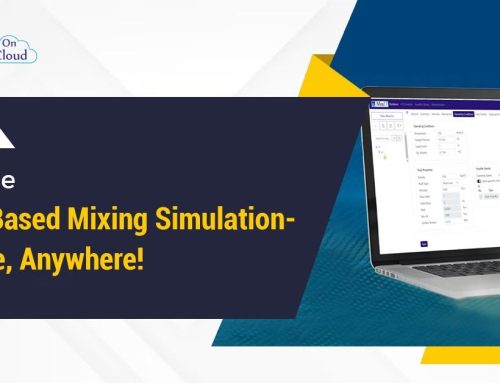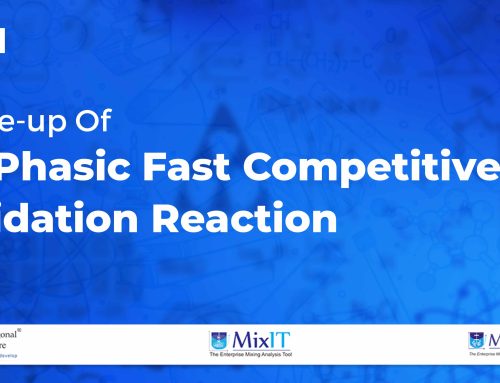San Antonio, TX, USA, June 8th, 2016
CFD modeling of stirred tank reactors essentially involves modeling of relative motion between the stationary baffles/internals and the rotating impeller blades. During the past 20 years, different approaches for treating the impeller motion have been proposed. Out of this, the Multiple Reference Frame (MRF) and Sliding-Mesh approaches are the most widely used.
Multiple Reference Frame approach (MRF) – also known as the Frozen Rotor approach – is the simpler of the two. In the MRF approach, the reactor is divided into two regions: an inner region attached to the rotating impeller and shaft; and an outer region attached to the stationary baffles and the reactor. The equations for the inner region are solved using a rotating framework (when a rotating framework is used the centrifugal and coriolis forces are included in the momentum equation), whereas the equations for the outer region are solved using a stationary framework. The solutions from both regions are matched at the interface between the rotating and stationary regions via velocity transformation from one frame to the other. This velocity-matching step involves the implicit assumption of a steady flow condition at the interface.
In the Sliding-Mesh approach, full transient simulations are carried out using two grid zones. One of the grid zones is attached to the impeller (rotating region) while the other grid zone is attached to the tank walls and baffles (stationary region). Since this approach involves mesh motion it is imperative that the interface between the zones be two overlapping faces, one of which is attached to the rotating region while the other is attached to the stationary region. The interaction between the two regions is modeled by interpolating the information across these faces.
The characteristic of each of these approaches is summarized below.
| Multiple Reference Frame | Sliding Mesh |
|---|---|
| Steady state simulation possible | Transient simulations are necessary |
| Low computational cost | High computational cost |
| Effect of impeller position relative to tank internals not accounted for | Simulation of actual impeller rotation and change in impeller position |
| Suitable for steady state analysis | Suitable for analysis of unsteady operations such as startup or shutdown |
| Can accurately predict characteristics like power draw and flow number | Can accurately predict characteristics like power draw and flow number |
| – | Slightly better accuracy while predicting blend time |
Table – Major differences between MRF and Sliding-Mesh approaches
For most engineering applications, knowledge of the full-time varying flow field (which becomes cyclically repeating after a certain number of impeller rotations) may not be necessary. At Tridiagonal, we have experience in using both modeling approaches to evaluate mixing performance of stirred tanks. Our experience says that the level of information obtained from a steady-state simulation using the MRF approach is sufficient for most industrial applications.
If the effect of the relative position of the impeller and baffles/internals on the flow needs to be studied, it is advisable to run multiple MRF simulations with different relative positions of the impeller rather than to use the Sliding-Mesh approach. Since computational time and resources required for the Sliding-Mesh approach are an order of magnitude higher than for MRF, running a few MRF simulations instead of one Sliding-Mesh simulation can still prove economical.
Tridiagonal Solutions Inc is an advanced engineering solutions provider with expertise in process performance enhancement and product development solutions for industrial clients worldwide. Their portfolio includes process engineering, CFD, EFD, Discrete Element Modeling services and chemical mixing simulation products . Tridiagonal Solutions caters to the Chemical and Process, Oil and Gas, Consumer goods, Food, Electronics, Power Generation and Healthcare Industries. For more information please visit www.tridiagonal.com or call (210) 858-6192.
Tridiagonal Solutions Inc | 12703 Spectrum Drive | San Antonio | TX 78249 | USA
newsletter-mixit@Tridiagonal.com
Reference Links:










Leave A Comment